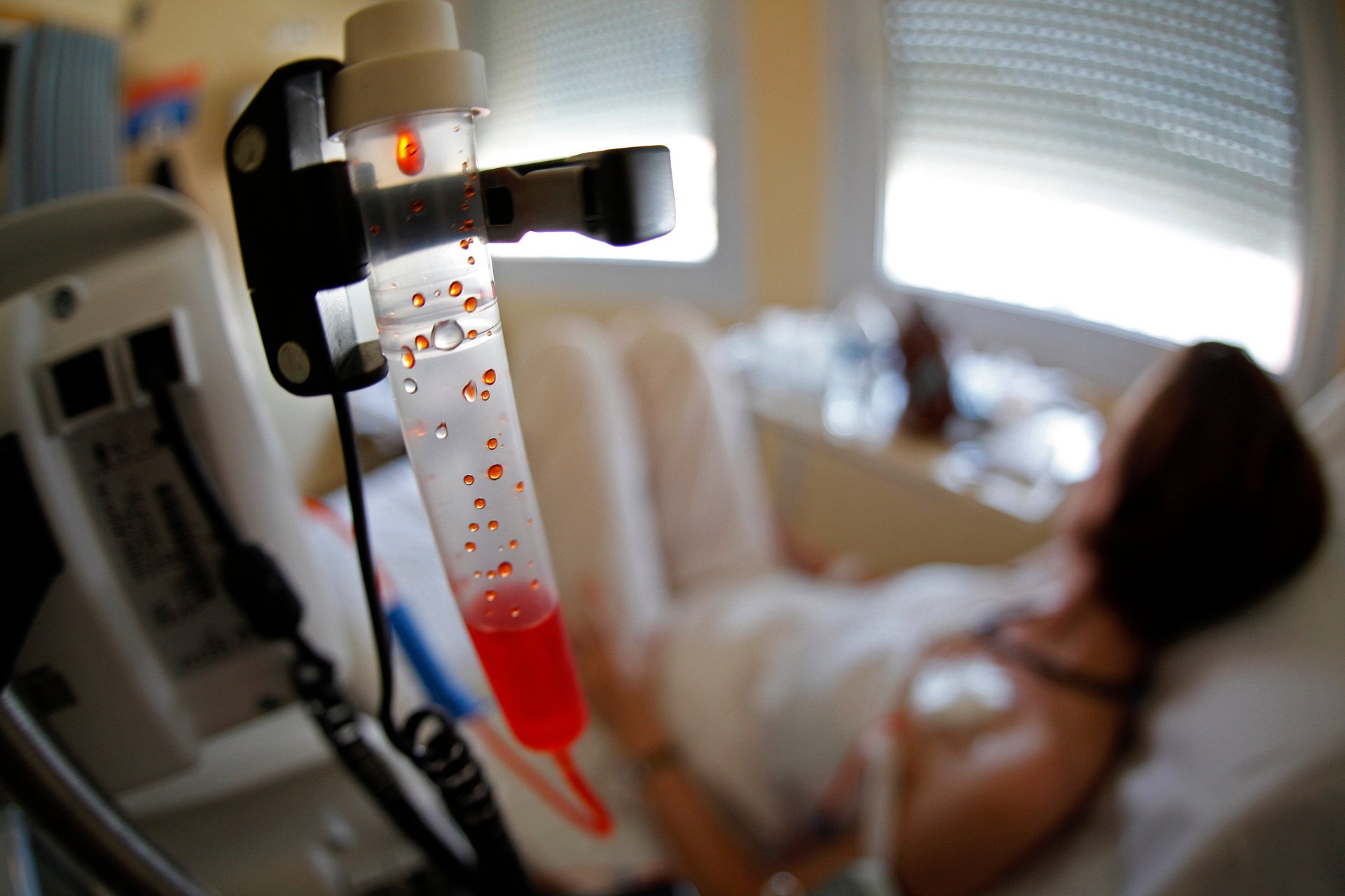The latest discovery in breast cancer treatment is a win for research that puts patients, not drugs, first
The New England Journal of Medicine recently published a study that’s made waves in the medical community. The trial assessed the usefulness of chemotherapy for a specific, common variant of breast cancer, and found that thousands of women may not actually need to undergo the intensive, painful treatment as part of their cancer-fighting regimen. The finding will likely benefit patients and their families, and the healthcare systems that look after them.


The New England Journal of Medicine recently published a study that’s made waves in the medical community. The trial assessed the usefulness of chemotherapy for a specific, common variant of breast cancer, and found that thousands of women may not actually need to undergo the intensive, painful treatment as part of their cancer-fighting regimen. The finding will likely benefit patients and their families, and the healthcare systems that look after them.
It also marks another important victory for something called a “non-inferiority trial.” This less well-known type of research is arguably our most powerful weapon in the war against unnecessary or harmful pharmaceuticals—and it starts with putting people first.
To understand how non-inferiority trials work, and to appreciate their unique place in the world of modern medical research, it’s important to understand the design of more traditional and commonly used “superiority” trials. In superiority trials, patients are randomly assigned to different treatment groups: one group receives an experimental treatment and the other receives either no treatment or a placebo. Following the treatment period, the positive impact of the new drug is inferred based on differences in patient outcomes.
Some treatments, though, are so essential that it’s unethical to withhold them, even in a research setting. Aspirin following a heart attack, antibiotics for bloodstream infections, and chemotherapy for certain cancers—in these cases, and many others like them, it would be unthinkable to randomly assign patients to a placebo that’s tantamount to a death sentence when we know that there’s a drug that would work.
Non-inferiority trials offer an interesting solution to this problem. Using evidence from previous research, non-inferiority trials assign patients to separate treatment groups, but all have access to life-saving treatments along the way.
As an analogy, imagine that you have two plants sitting in a window, and you notice that they’re both losing some leaves. You suspect the problem is too much direct sunlight. You know that both plants need sunlight and water to survive, so you can’t ethically deprive them of either of these things. On the other hand, it would be acceptable to place one plant in a spot with only indirect light, to see if it could survive just as well as it did with direct light. So you leave plant A by the window, and take plant B away to a nook where there is indirect light only. Both plants get the same amount of water. Over time, both plants survive, but plant B has fewer burnt leaves. From then on, you could keep all your plants in the nook instead of in the direct sunlight, and they’d all be better—and you never had to kill any plants along the way to figure it out.

The recent breast cancer trial essentially did the same thing, only chemotherapy was the direct light and hormone therapy was the water. The researchers used a non-inferiority design to maintain patients’ access to the essential therapy, allowing physicians to tweak other factors without putting their patients in harm’s way. This places people, not drugs, at the centre of the research.
“Most non-inferiority trials are about minimizing side-effects…they’re trying to show a drug has the same benefit, but with less costs or less side effects,” says Dr. Sam Vaillancourt, an emergency physician and clinical researcher at St. Michael’s Hospital in Toronto, Canada. “In this breast cancer trial, you can see that the impact is really significant, both in terms of the side effects and the costs.”
Non-inferiority trials aren’t new. Back in the 1980s, researchers were busy running superiority trials to establish safe standards for everything from antibiotic regimens to heart attack treatments. The medical literature was filled with head-to-head comparisons of treatments versus placebos. But as results poured in from hundreds of thousands of these trials in the 1990s, and as evidence-based guidelines became the new gospel of medicine, the ethical dilemma of withholding standard treatments for the purposes of a trial became increasingly common. That’s when non-inferiority trials started gaining traction, quietly blossoming into a valuable source of information for the treatment of blood clots, infections, cancers, and many other conditions.
“Non-inferiority trials are borne out of moral conscientiousness,” says Dr. Iain McGurgan, a clinical research fellow at Oxford University, UK. “They’ve become ever more necessary as fewer new treatments can be ethically compared to placebo.”
Non-inferiority trials aren’t without their limitations, though. For one thing, they aren’t capable of telling us which treatment works better, they’re only capable of telling us if a new treatment isn’t worse than the standard treatment. The recent breast cancer study, for instance, wasn’t designed to tell us whether hormone therapy itself was effective in treating breast cancer — as far as the researchers were concerned, this question had already been answered by previous studies, so for the purposes of their non-inferiority study it was reasonable to assume that the hormone treatment was effective. In fact, their entire study rests on this assumption. Problems arise, then, whenever non-inferiority studies rely on shabby evidence to begin with. McGurgan says that drug companies can exploit this by conducting poorly designed trials grounded in suspect evidence. This could make some medications look more impressive than they really are.
Bearing these limitations in mind, there’s still reason to celebrate what non-inferiority trials offer us. When superiority trials catapult a drug into evidence-based clinical guidelines, it can be difficult and even unethical for doctors to not prescribe it. It’s like building a bureaucratic cocoon around a drug, preventing doctors from changing their prescription practices, even when better options become available. Non-inferiority trials give us ethical grounds to fight back against this trend. They give us a way to challenge outdated, potentially harmful prescription patterns.
As we face the fallout of widespread misuse of antibiotics and dangerous opioid prescription patterns, and in light of recent insights regarding pharmaceutical companies’ frightening practice of hiding data about the drugs they peddle, non-inferiority trials are one of the few checks and balances we can turn to.
“Used properly, non-inferiority trials can be a very powerful tool to de-escalate over-medicalization,” says Vaillancourt. For now, they may just be our most powerful weapon in the fight to put patients first.
This article is part of Quartz Ideas, our home for bold arguments and big thinkers.